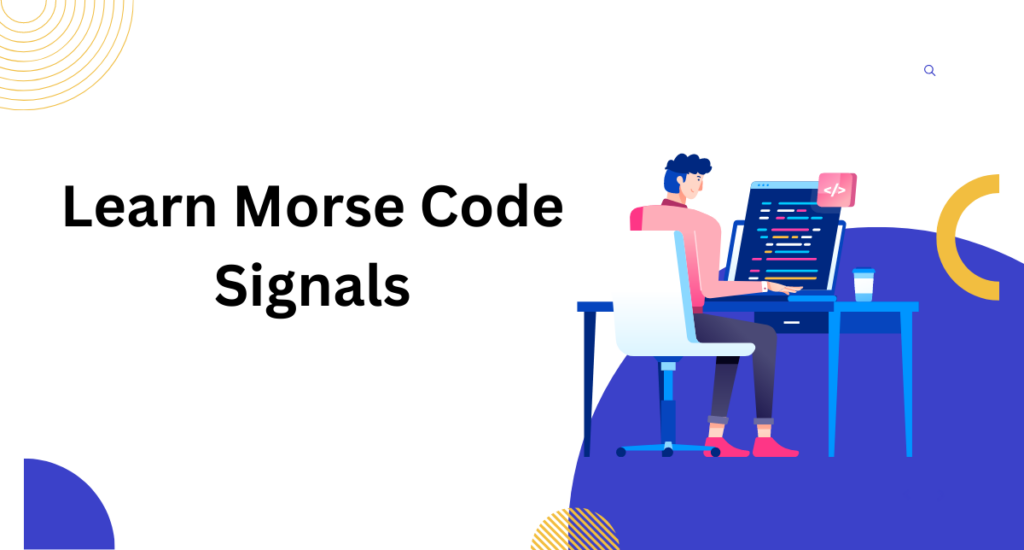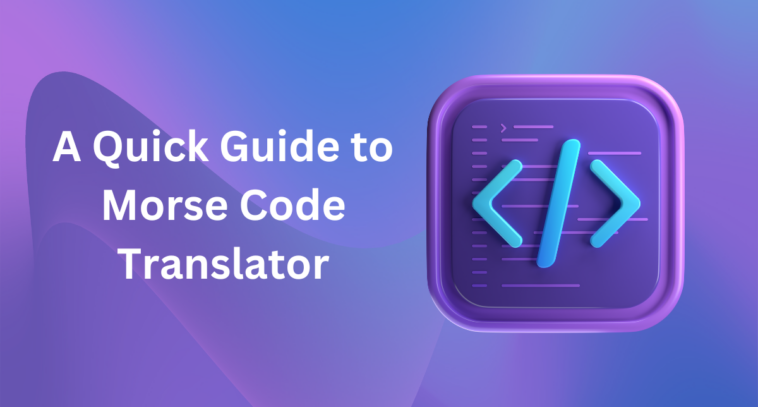The practice of Morse Code would appear to be a lost art in a world where voice assistants, emojis, and instant messaging are the norm.
A series of dots and dashes are used to transmit coded messages using the Morse code, a communication method invented by Samuel F.B. Morse. Despite the fact that it was first developed as a means of communication across telegraph lines, For delivering urgent distress messages in emergency situations, amateur radio enthusiasts still utilize Morse code today.
Even though learning Morse code isn’t especially challenging, it does involve study and commitment, just like learning any other language. Once you are familiar with the fundamental signals, you can start creating and interpreting your own messages.
However, the history of this straightforward but efficient communication mechanism is fascinating. Even in today’s technologically evolved era, it remains relevant. This short article offers a basic primer on Morse Code comprehension and instruction.
What is Morse Code Translator, and How do I use it?
Anyone may quickly translate text into Morse code and reverse the process with the Morse Code Translator. Using the online Morse code translator, anyone can translate any plain text.
To use the Morse code converter, simply enter the Morse code or text into the respective input areas. Do you recall, for instance, the tone from the Nokia SMS? Try playing the audio after decoding “… –…”. How about cracking the code to a hidden Morse code or the hidden message in an online game? So long as you have an internet connection and a desire to study Morse code, Morse Code Translator can assist you.
A Complete Guide to Learning Morse Code
Information can be transmitted using Morse code, which consists of a string of dots, dashes, and spaces. It was created in the early 1800s by Alfred Vail and Samuel Morse, and it quickly became the norm for long-distance communication. In some situations today, including in amateur radio operations and aircraft, morse code is still employed.
It can be enjoyable and gratifying to learn morse code. Anyone can learn to decipher and send Morse code signals with practice, despite the fact that it may initially seem difficult. How to learn morse code is discussed here;
Learn Morse Code Signals

Find out what the fundamental signals mean. Dots and dashes are the two different signal units used in Morse code. Learning to identify these units as they appear in the text will be your first goal. Dots have the appearance of a plain period, whereas dashes are lengthy horizontal lines that resemble hyphens. These two signals can be used to represent any character in the English language. Dots are referred to as “dits” in the official Morse language, which is spoken with a short “i” sound and a silent “t.” The formal name for dashes is “dahs,” which has a short “a” sound.
Scan the Morse Code Alphabet
Review the Morse code alphabet. When attempting to decode a single character, scan the Morse code alphabet and make reference to it. Make a note of each letter or number as you travel through the alphabet, then say the appropriate dit-dah combination aloud. With practice, you’ll be able to instantly recall code based on its sound and appearance.
Nevertheless, the Morse code alphabet is a useful tool. The most skilled users advise learning the system by its sounds instead of how it is written down in the text. By eliminating the unnecessary step of referring to how the signals appear when written out, this considerably simplifies the procedure.
Make Each Signal Loud
Work on speaking dits and dahs in the right rhythm. Dits produce a brief, one-syllable sound. When pronounced, dahs should be more drawn-out and linger roughly three times longer than dits. Morse code uses a fast and slow rhythm to distinguish between different units.
Be mindful of the distance between words and letters. There should be one dash plus one space between each letter. While a spacing of seven dots should be used to separate entire words. Your message will be more likely to be understood if your spacing is more exact. Since you may skip counting up dits and dahs, learning Morse code by sound is typically faster than learning it by sight.
Listen Recordings
Listen to recordings of Morse code. Look up recordings of Morse code messages to get an idea of how the system works for communication. Pay attention to both the character pauses and the character transitions. If necessary, slow down the recording’s playback to make it simpler to distinguish each signal.
The archives contain a sizable number of Morse code recordings that can be used for listening practice. To experience the actual thing, use your ham radio to listen to HF frequencies. To receive teaching that is catered to your level of comprehension, purchase practice recordings.
Download Training App
Install a Morse-code training app. To help you study, there are currently apps like Dah Dit and Morse-It accessible. These apps offer a more integrated learning experience by combining audio recording and visual recognition. Additionally, they enable direct interaction through the haptic touch response of your device and the push of a button.
You may practice whenever you choose, whether at home or on the road, by using an app. Utilize both app-based learning and pen-and-paper exercises to improve your understanding of codes in all their guises.
Wrapping Up
You now have important new knowledge about the world of Morse code and how it continues to affect our daily lives. Morse code is a representation of human creativity and adaptability due to its historical relevance and useful applications. Keep in mind that studying Morse code is a fascinating trip that expands your knowledge and provides access to numerous options. Listening to radio transmissions in morse code is a fantastic method to practice. Morse code instruction can be an enjoyable and rewarding hobby. When other means of communication are not available, it might also be helpful in an emergency. Morse code is a skill that everyone can master with a little time and effort.



